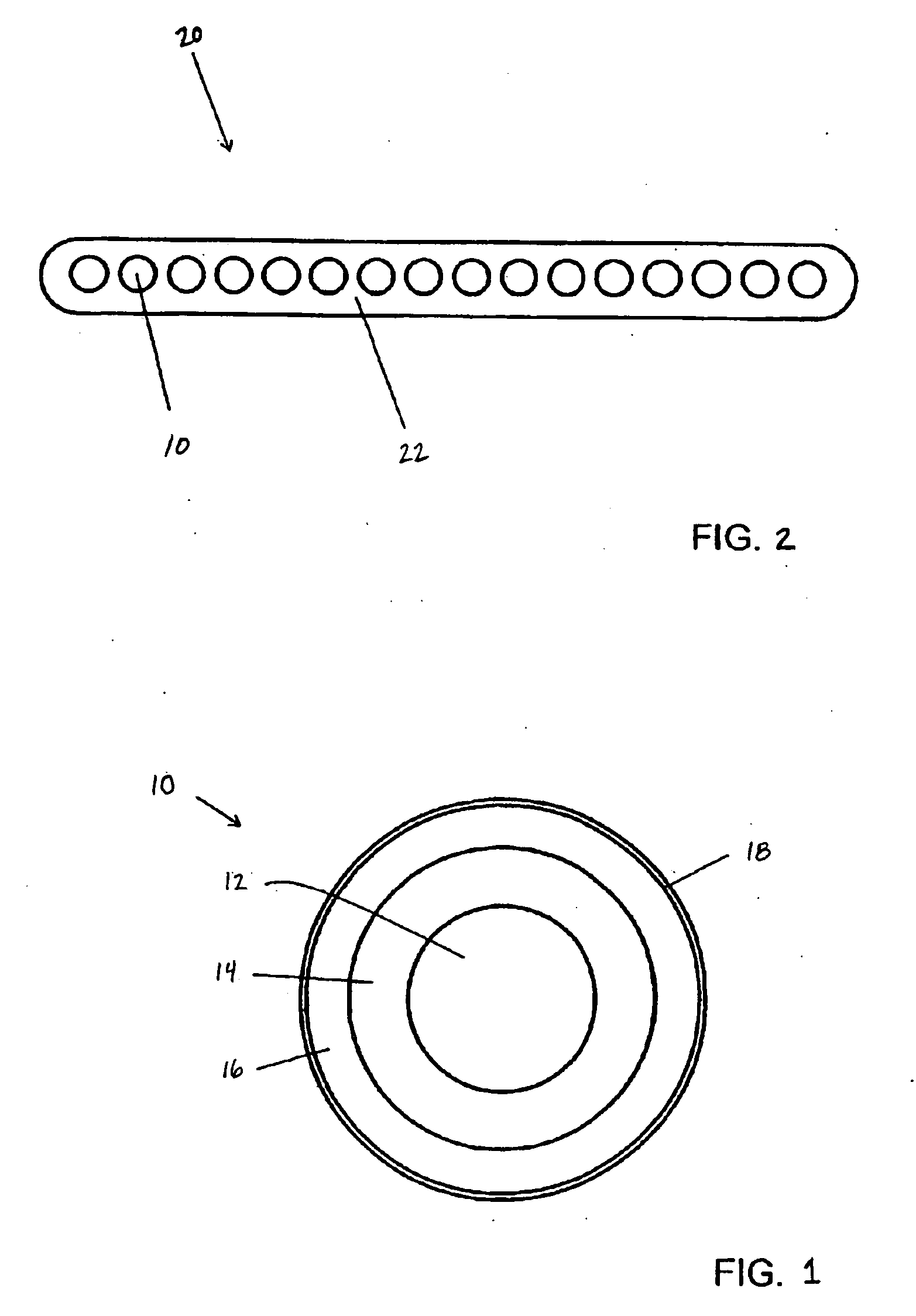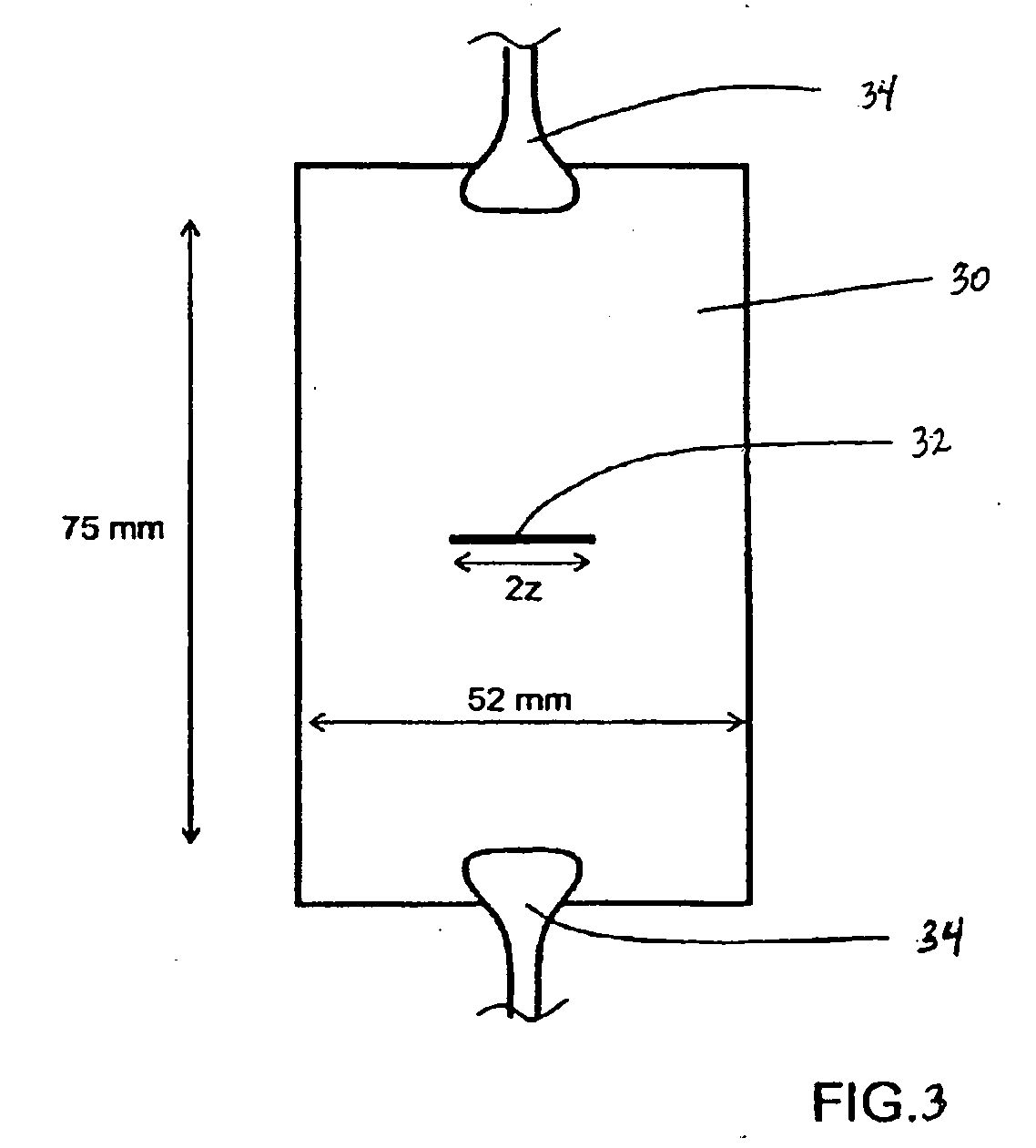Non-reactive additives for fiber coatings
a technology of additives and fiber coatings, applied in the direction of coatings, polyurea/polyurethane coatings, layered products, etc., can solve the problems of difficult to find examples of similar approaches to toughening in ultra-violet (“uv”) curable acrylic coatings, and increasing the brittleness of these materials. , to achieve the effect of improving the microbend performance of optical fibers, enhancing handleability
- Summary
- Abstract
- Description
- Claims
- Application Information
AI Technical Summary
Benefits of technology
Problems solved by technology
Method used
Image
Examples
example 1
Preparation of Urethane / Acrylate Oligomers with Substantially Non-Reactive Oligomeric Additives
[0094] All formulations contain 1.5 pph Irgacure 819=Bis(2,4,6-trimethylbenzoyl)-phenylphosphineoxide from Ciba, 1.5 pph Irgacure 184=1-Hydroxy-cyclohexyl-phenyl-ketone from Ciba.
[0095] Photomer 4028 is ethoxylated (4) BPA diacrylate monomer, which was obtained from Cognis Corporation. Photomer 3016 is epoxy acrylate oligomer obtained from Cognis Corporation. Sylvatac R40 and Sylvatac RE25 are proprietary pentaerythritol based resin ester tackifiers obtained from Arizona Chemical.
PEryth(PO)5[IPDI˜BPA˜IPDI˜HEA]4 Reactive Oligomer 1
[0096] Urethane acrylate oligomer with the structure PEryth(PO)5[IPDI˜BPA˜IPDI˜HEA]4 was prepared by initially heating a mixture of 78.5 g Photomer 4028, 20.0 g (0.088 mole) bisphenol A (Aldrich), 9.34 g (0.022 mole) propoxylated (5PO / 4OH) pentaerythritol (Aldrich, Mn=426) (also designated PertPO(426) above), 10.19 g (0.088 mole) 2-hydroxyethyl acrylate (Aldr...
example 2
Preparation of Secondary Coatings
[0103] The above-noted (comparative) reactive oligomers and substantially non-reactive oligomers were used to prepare secondary coating compositions. The formulation of the compositions is set forth in Table 3 below.
TABLE 3Curable Compositions with Oligomeric Additives and ControlsCompositionCoating(wt %)Coating Tg (° C.)Functional Comparative 1aComposition 1 - 20Tg = 61.5Photomer 3016 - 5Photomer 4028 - 72Irgacure 184 - 1.5Irgacure 819 - 1.5Functional Comparative 2Composition 2 - 20Tg = 57.5Photomer 3016 - 5Photomer 4028 - 72Irgacure 184 - 1.5Irgacure 819 - 1.5Functional Comparative 3Composition 3 - 20Tg = 60.3Photomer 3016 - 5Photomer 4028 - 72Irgacure 184 - 1.5Irgacure 819 - 1.5Test Coating A1Composition A - 20Tg = 61.5Photomer 3016 - 5Photomer 4028 - 72Irgacure 184 - 1.5Irgacure 819 - 1.5Plasticizer Comparative 1Sylvatac R40 - 10Tg = 48.3Photomer 3016 - 5Photomer 4028 - 82Irgacure 184 - 1.5Irgacure 819 - 1.5Plasticizer Comparative 2Sylvatac RE...
example 3
Preparation of Optical Fibers with Primary Coatings
[0110] Optical fibers will be prepared using the above-identified primary coating materials and suitable secondary coating materials according to known procedures. Primary and secondary coating materials will be applied to drawn glass fibers subsequent to cooling. The glass fiber, having a diameter of about 125 μm, will be introduced into a container of one of the primary compositions listed in Example 1. As the coated fiber is removed from the container, the thickness of the primary coating composition will be adjusted to about 32.5 μm by passing the coated fiber through a die. The coated fiber will then be drawn through a second coating container holding a secondary coating composition of the present invention. As the coated fiber is removed from the second container, the thickness of the secondary coating composition will be adjusted to about 27.5 μm by passing the coated fiber through a die.
[0111] The coated fiber will be cure...
PUM
| Property | Measurement | Unit |
|---|---|---|
| Young's modulus | aaaaa | aaaaa |
| Mn | aaaaa | aaaaa |
| molecular weight | aaaaa | aaaaa |
Abstract
Description
Claims
Application Information
 Login to View More
Login to View More - R&D
- Intellectual Property
- Life Sciences
- Materials
- Tech Scout
- Unparalleled Data Quality
- Higher Quality Content
- 60% Fewer Hallucinations
Browse by: Latest US Patents, China's latest patents, Technical Efficacy Thesaurus, Application Domain, Technology Topic, Popular Technical Reports.
© 2025 PatSnap. All rights reserved.Legal|Privacy policy|Modern Slavery Act Transparency Statement|Sitemap|About US| Contact US: help@patsnap.com



